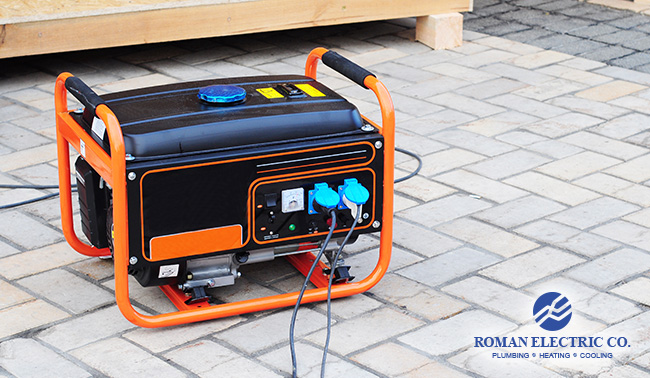It’s important to be prepared in the case of a power outage by having a portable generator. But simply purchasing one isn’t enough. With blackouts being both anticipated and unexpected, performing regular maintenance on your portable generator is also necessary. When you want to use your portable generator, you want to help ensure it’s operating at full capacity, with no issues preventing power distribution.
So, what are some ways you can help maintain your portable generator? The experts at Roman Electric would like to answer this question for Milwaukee homeowners. Below are 4 portable generator maintenance tips you can perform.
1. Keep Your Portable Generator Clean/Covered When not in Use
When your portable generator is sitting in a room for days on end, it can get pretty dirty. Build-ups of dust, debris, or even mold/moss can accumulate on your portable generator. These contaminants can seep into vital components, possibly making it harder to function. Therefore, you’ll need to keep your portable generator cleaned and protected to help maintain it.
The best way to protect your portable generator from getting dirty is by purchasing a generator cover at your local department store. These covers can shield your portable generator and can come with additional capabilities such as water-resistance or weather proofing. However, they also act as insulation, so take them off before running your generator to avoid overheating.
If you don’t want to purchase a cover for your portable generator, then we recommend checking and cleaning it once a month.
2. Empty Your Portable Generator’s Tank After Use
After your portable generator has done its job, you’ll need to empty its tank into a gas container. Although we recommend you have enough fuel for your generator, you shouldn’t have it stored idle in the fuel tank. This can lead to gum deposits, which is when gas sticks to metal surfaces and chambers of the portable generator. Gum deposits can obstruct its performance.
Therefore, it’s recommended to store your portable generator’s fuel in a separate container after every use.
3. Purchase and Keep Backup Fuel and Filters
Speaking of fuel, you’ll want to ensure you have enough on standby. Power outages may last anywhere from a few hours to several days, so it’s important you have enough fuel to help accommodate. We recommend having enough backup fuel to fully refill your portable generator’s fuel tank. Be sure to also have backup oil and oil filters in case they require a replacement.
4. Monitor Your Portable Generator’s Wattage Capacity
When using your generator, you’ll want to be sure it can handle the voltage you plan on using. Not all portable generators are the same, so you’ll need to check your portable generator’s labeling or manual to determine its wattage rating. There’s usually two of these ratings listed: starting and running.
The starting or maximum rating is how much wattage a generator puts out in very short periods of time. Due to this, starting ratings usually have a higher rating. But overall this rating should be ignored for the most part. Instead, you’ll want to focus on the running or continuous rating. This rating determines the wattage over extensive periods of time, which is what you’ll be needing from a portable generator. Accommodate the running rating with whatever devices you plan on using with your portable generator.
Help give your portable generator that essential boost in performance by following these maintenance steps! And if you would like to upgrade your backup power by installing a whole-home standby generator, contact Roman Electric today! Give us a call at 414-369-3798 for affordable backup generator services.
Related Links:

